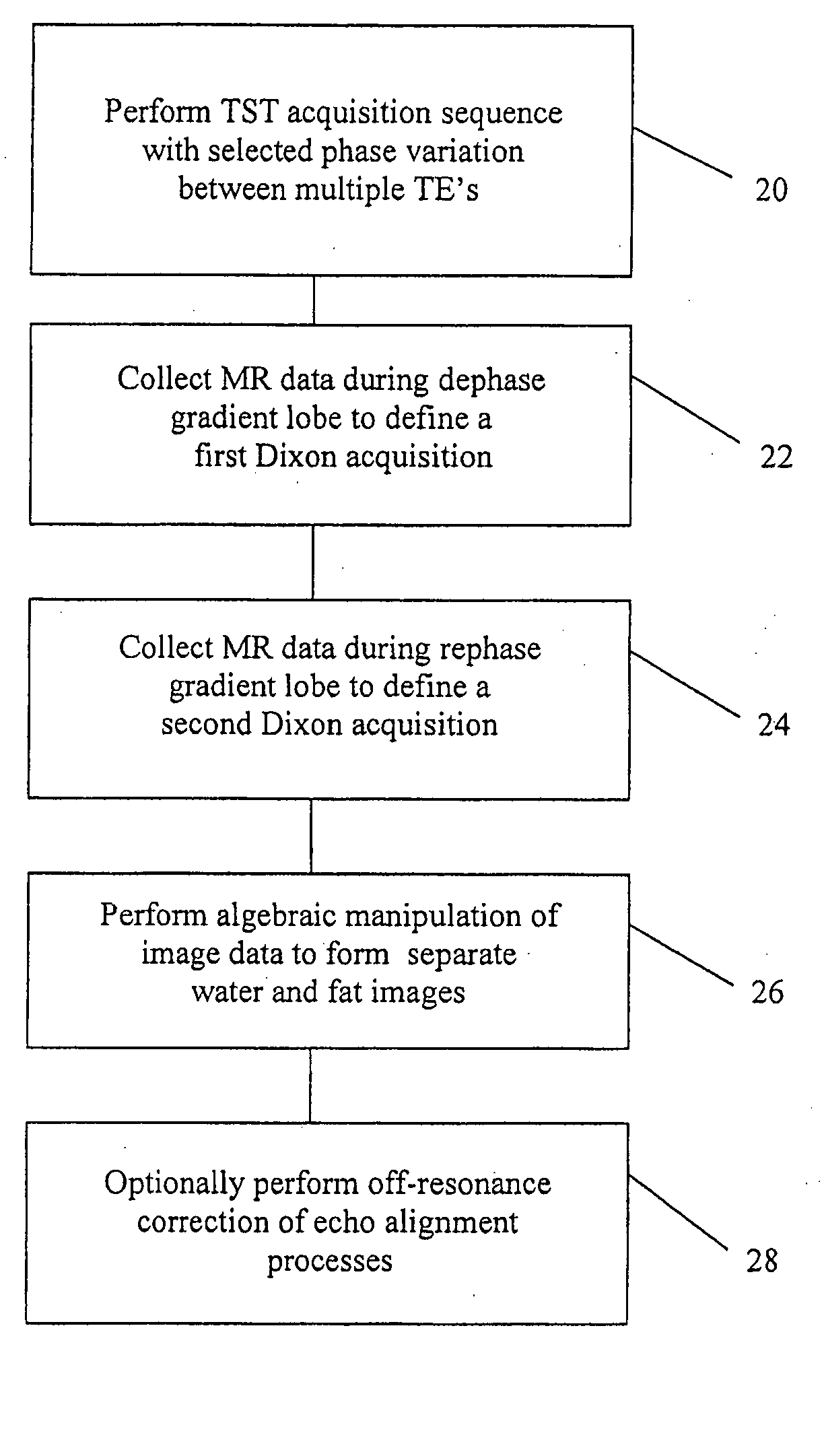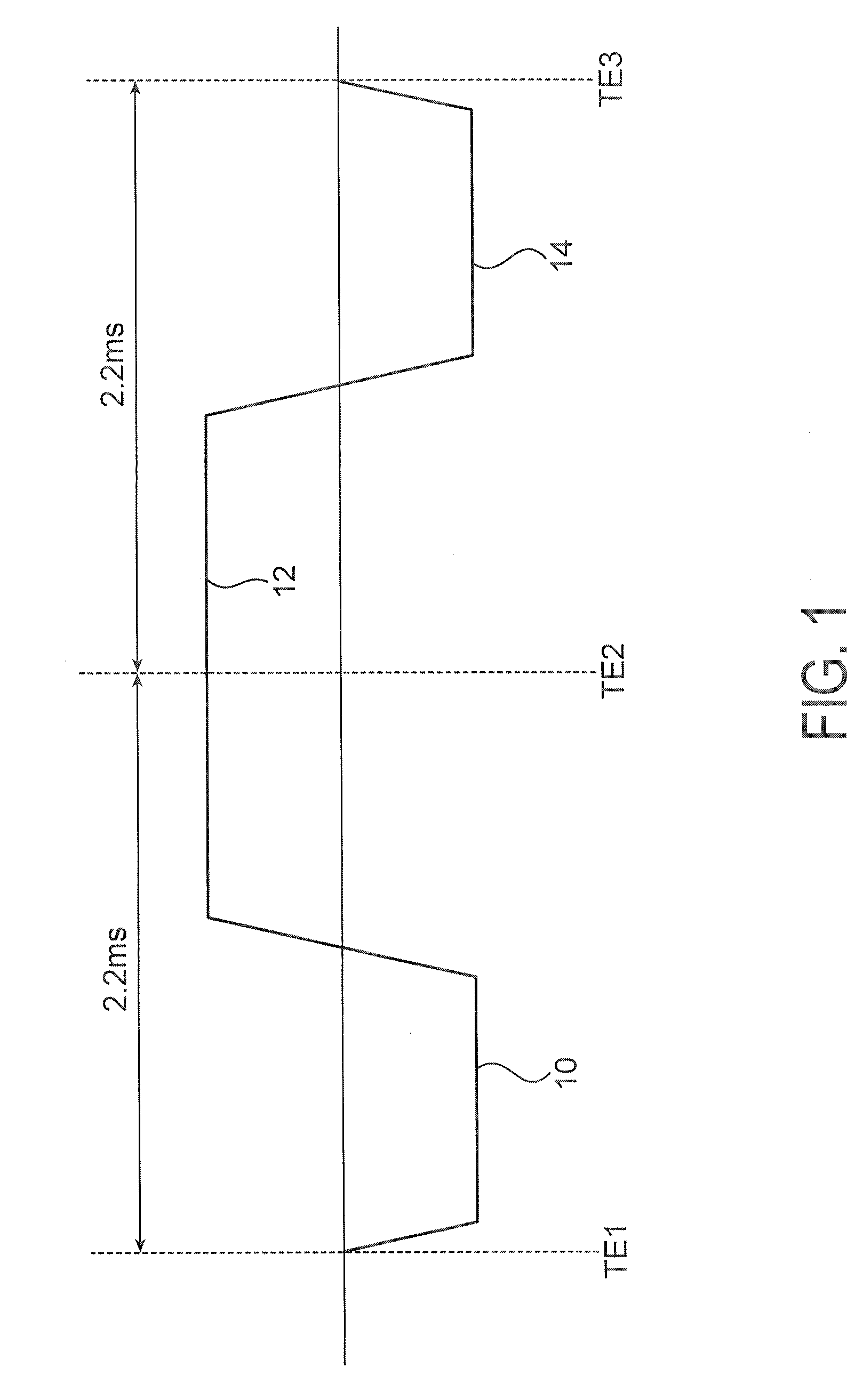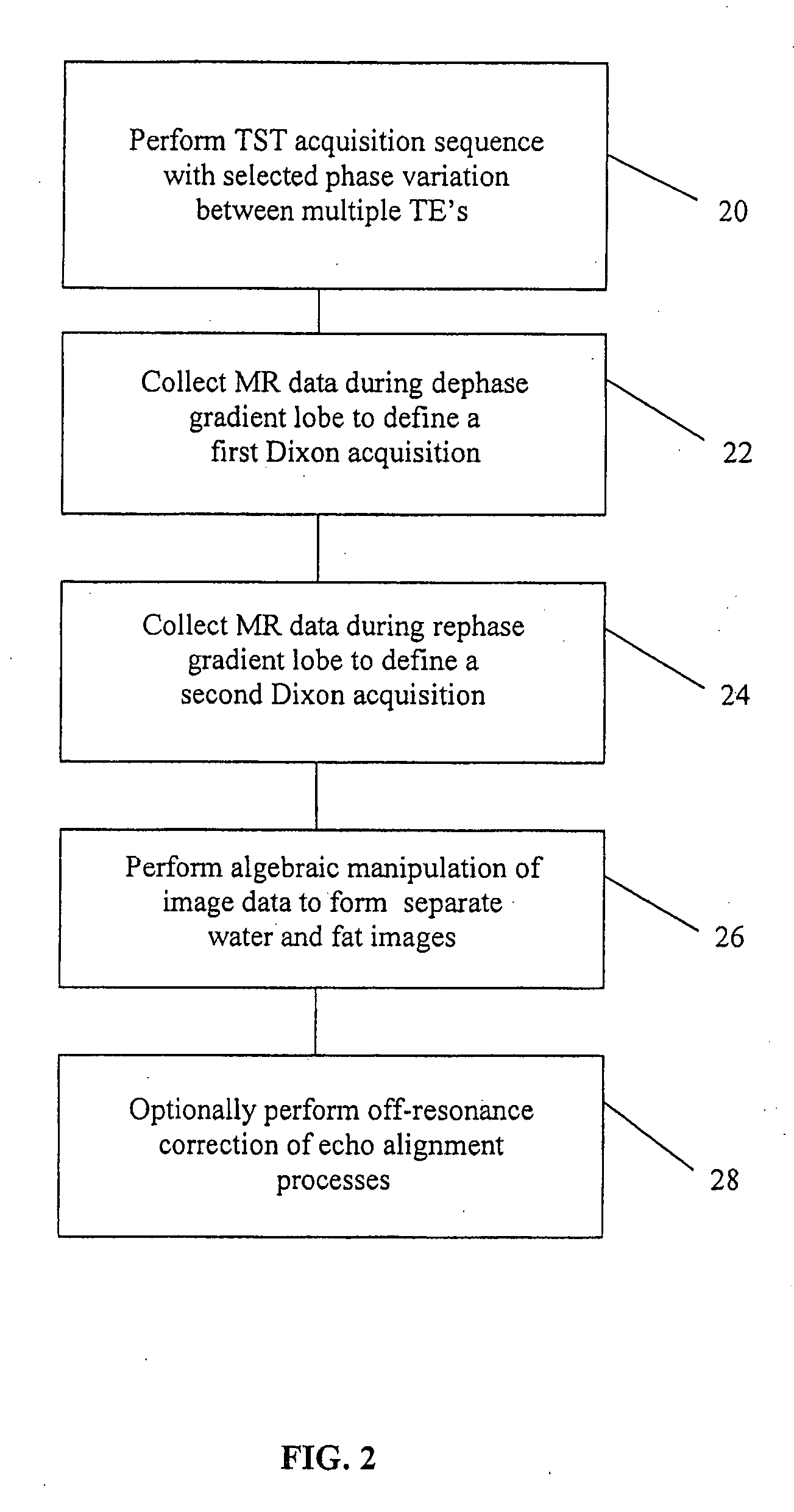Methods for fat signal suppression in magnetic resonance imaging
a magnetic resonance imaging and fat signal technology, applied in the field of magnetic resonance imaging, can solve the problems of obscuring important pathology, affecting the quality of the acquired image, so as to achieve significant reduction of total acquisition time, high contrast water, and time saving
- Summary
- Abstract
- Description
- Claims
- Application Information
AI Technical Summary
Benefits of technology
Problems solved by technology
Method used
Image
Examples
examples
[0026]FIGS. 3A-3C and 4A-4C show the results according to use of the methods of the invention as compared to typical two-point Dixon methods. As a particular example, a FLASH pulse sequence according to FIG. 1 was implemented on a 1.5 T Siemens Sonata MR Scanner, with TE1, TE2 and TE3 selected to allow 180° phase variation in the fat magnetization between each of the three TE's. Imaging parameters used were TE1 / TE2 / TE3=3.4 / 5.6 / 7.8 milliseconds, TR=14 milliseconds, FOV=300 millimeter2, slice thickness=5 millimeters. A second acquisition was collected with TE2=7.8 milliseconds in order to perform traditional, two-point Dixon fat suppression for comparison. Phantom and clinical images were acquired with the TST sequence of FIG. 1, with the dephase / rephase (S1) and readout (S2) k-space data gridded separately using linear interpolation from a measured trajectory. The water and fat images were calculated by adding or subtracting S1 and S2 and then performing 2D Fast Fourier Transform (2D...
PUM
 Login to View More
Login to View More Abstract
Description
Claims
Application Information
 Login to View More
Login to View More - R&D
- Intellectual Property
- Life Sciences
- Materials
- Tech Scout
- Unparalleled Data Quality
- Higher Quality Content
- 60% Fewer Hallucinations
Browse by: Latest US Patents, China's latest patents, Technical Efficacy Thesaurus, Application Domain, Technology Topic, Popular Technical Reports.
© 2025 PatSnap. All rights reserved.Legal|Privacy policy|Modern Slavery Act Transparency Statement|Sitemap|About US| Contact US: help@patsnap.com



